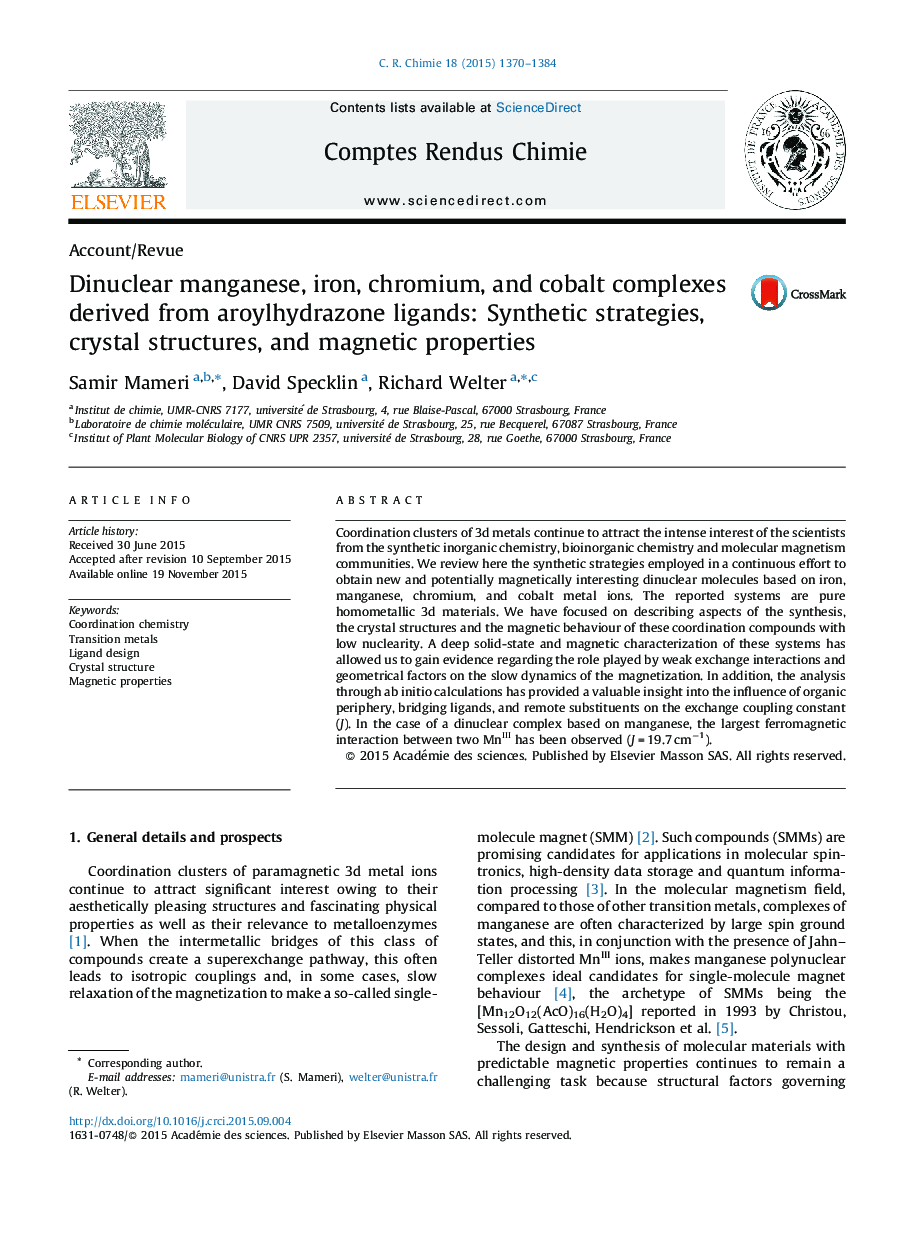| کد مقاله | کد نشریه | سال انتشار | مقاله انگلیسی | نسخه تمام متن |
|---|---|---|---|---|
| 170252 | 458380 | 2015 | 15 صفحه PDF | دانلود رایگان |
• Synthetic strategies employed to obtain new and magnetically interesting dinuclear molecules based on iron, manganese, chromium, and cobalt metal ions.
• Compared crystal structures of 15 dinuclear complexes.
• Very strong ferromagnetic interactions in Mn3+ dinuclear compounds.
• Magnetostructural correlations discussed.
• Compared data from theoretical calculations.
Coordination clusters of 3d metals continue to attract the intense interest of the scientists from the synthetic inorganic chemistry, bioinorganic chemistry and molecular magnetism communities. We review here the synthetic strategies employed in a continuous effort to obtain new and potentially magnetically interesting dinuclear molecules based on iron, manganese, chromium, and cobalt metal ions. The reported systems are pure homometallic 3d materials. We have focused on describing aspects of the synthesis, the crystal structures and the magnetic behaviour of these coordination compounds with low nuclearity. A deep solid-state and magnetic characterization of these systems has allowed us to gain evidence regarding the role played by weak exchange interactions and geometrical factors on the slow dynamics of the magnetization. In addition, the analysis through ab initio calculations has provided a valuable insight into the influence of organic periphery, bridging ligands, and remote substituents on the exchange coupling constant (J). In the case of a dinuclear complex based on manganese, the largest ferromagnetic interaction between two MnIII has been observed (J = 19.7 cm−1).
Figure optionsDownload as PowerPoint slide
Journal: Comptes Rendus Chimie - Volume 18, Issue 12, December 2015, Pages 1370–1384
